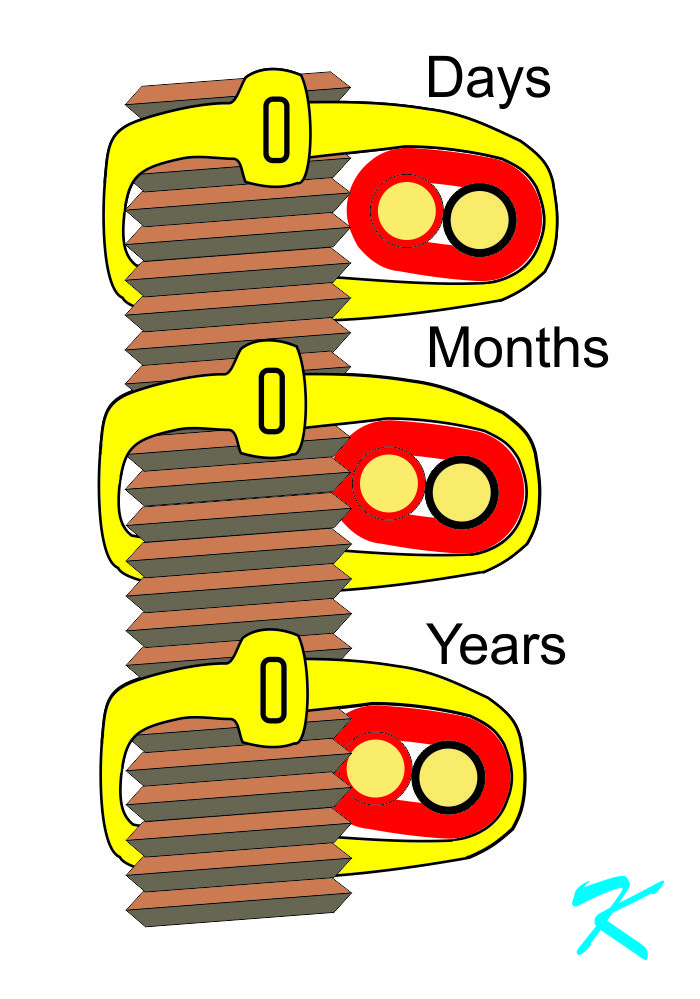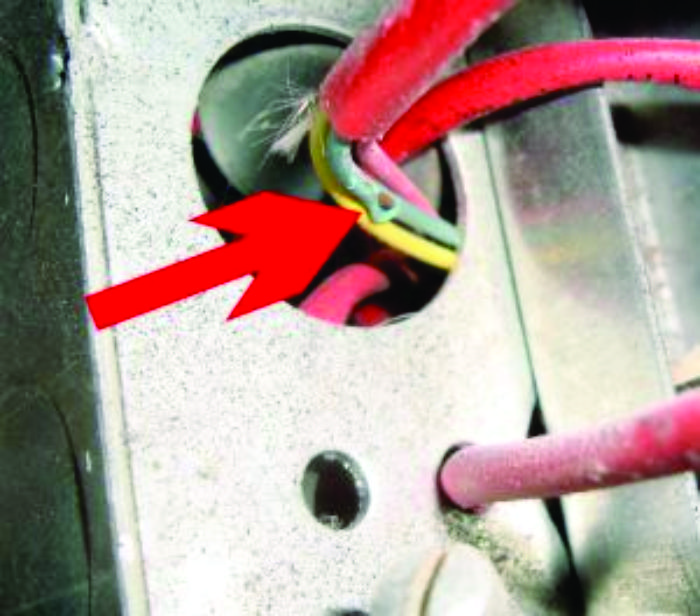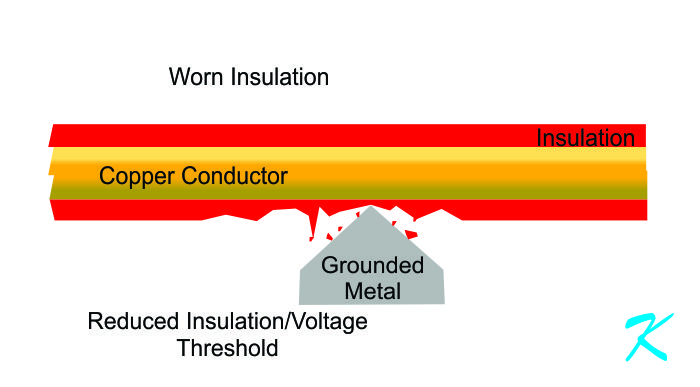Installing Power Limited Cable
Your idea of using one tie-wrap to secure the fire alarm cable itself, and another tie-wrap to secure the first tie-wrap to the building is a good one. When looking at it closely, that method provides two layers of hard plastic insulation (two tie-wraps) between the power limited cable and the building structure.
The root problem, at least from a different point of view, is that the insulation on the power limited cable is flimsy. In other words, compared to power un-limited insulation, like THHN insulation used to protect normal utility power carrying wires, the insulation around the fire alarm cable is easy-to-pierce, and it damages easily.
Tying a flimsy, power limited cable to rough surface, like T-bars, and especially to sharp surfaces like all-threaded rods, keeps troubleshooting people like me employed. Years after the original installation, I have had to spend lots of hours locating and fixing ground faults caused by the worn or pierced insulation.
Example of Easy-to-Pierce Insulation

You wouldn't do this, but many others have done this.
This is a fire alarm cable tied to a threaded rod. Many times, I've had to find, and then fix ground faults on threaded rods. Not immediately after it's been installed, but over months or even years, by being forced tightly to the threads by tie-wraps, the insulation is pierced.
Once the treads on the rod touch one of the copper conductors inside the cable, there is a ground fault that needs finding and fixing.
In other words, in order for the threaded rod to pierce the cable's insulation over time, the insulation has to be easy-to-pierce.
Example of Easy-to-Strip Insulation

This is a real example of easily damaged insulation. I had to find this ground fault in a 500-bed hospital. The room it was located in was being remodeled, but the ground fault had to be found and fixed before I could go home that night.
You're right. This is an awful installation. Higher quality insulation, like THHN, would have helped, but it's still against the installation requirements shown in the National Electrical Code (NEC or NFPA 70) for a reason.
The reason that the insulation was damaged so easily, though, is that it is designed to be quickly stripped off the wire. This is a blessing that comes with a curse.
The blessing is the ease and speed of installation, the curse is the fragility of the cable.
Power limited wiring, like what is used with fire alarm systems, doesn't have to be very tough. If the insulation is damaged and shorts out to something else, the power in the conductors won't cause a fire and won't electrocute anyone.
Even though there won't be any fires or electrocutions, care (and following the NEC Code) is still required to prevent the owner from having to pay for future troubleshooting.
Cheap Wire
Also, another limit to toughness is the over-all cheapness of the wire.
Most of the fire alarm installations in new buildings are paid for on a bid basis. If a company uses high quality, expensive cable, they won't get the bid because someone else is using the bare minimum quality, quicker to install, cheaper cable; the cheaper one gets the bid.
Double Tie-Wraps or else Hooks and Rings
A single tie-wrap can easily be used when:
- The surface that fire alarm cable is against is very smooth
- There isn't any vibration, at all, that can rub off the insulation

This is a still a problem, though. I've found this kind of ground fault 20 years after the original installation. Watch out for this, especially in fan rooms. Conduit ends, for instance, without proper gromets (shown in the NEC), have caused ground faults long after the installation.
Just in case of future ground fault problems, in most cases, instead of using a single tie-wrap, use gromets, or the double tie-wrap method you're referring to.
Long Term Installation, Remodeling, and Troubleshooting
The National Electrical Code (NEC or NFPA70) shows better ways to install wire. Also, using double tie-wraps, in many cases, is the bare minimum installation method. Often Authorities Having Jurisdiction (AHJ) may also have more requirements, including bushings, J-hooks, bridal rings, etc. Sometimes, shop preferences can even require more.
Remember, the person originally installing the fire alarm wiring is not the last person working directly with the wiring. Whenever installing any wiring, be considerate of others that have to change the wiring or troubleshoot the wiring at a later date.
Douglas Krantz




